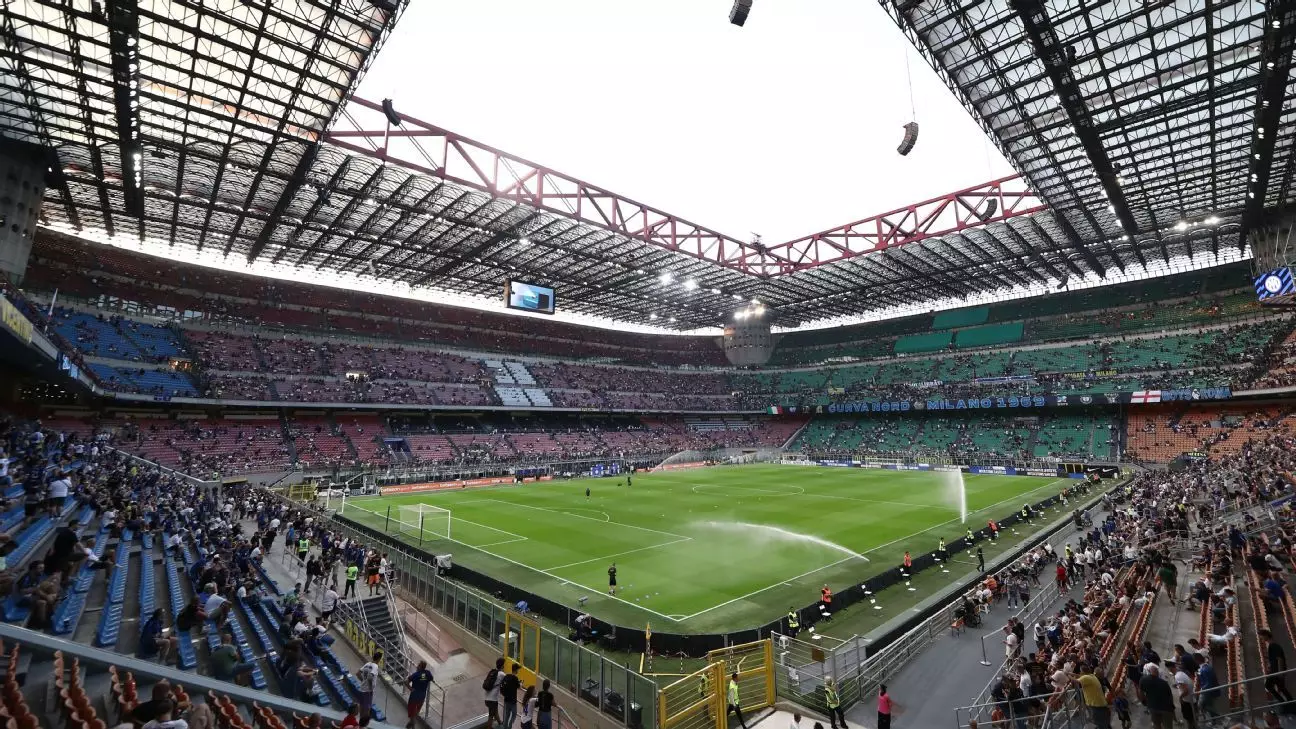AC Milan and Inter Milan, two of the most storied football clubs in Italy, have recently sidestepped the idea of renovating their iconic San Siro stadium. Instead, city officials confirmed that both teams are looking to construct a new, modern stadium in the San Siro vicinity. This decision marks a crucial pivot in a lengthy debate that has spanned over five years, highlighting the complexities involved in urban planning and sports management in Italy. The mayor of Milan, Giuseppe Sala, noted the clubs’ conclusion that revamping the historic venue is not a financially viable option. This raises questions about the feasibility of maintaining legacy structures amid the demands of modern sports economics.
The Push for a New Beginning
Inter and Milan are currently under the stewardship of American investment firms, with RedBird Capital and Oaktree Capital overseeing their operations. Their desire for a state-of-the-art facility stems from a pressing need to enhance their revenue potential, which trails behind many of their European counterparts. A modern stadium could unlock new revenue streams through increased capacity, premium seating, and enhanced matchday experiences. The push for a new venue contrasts with earlier proposals that revolved around renovating the century-old San Siro to keep it as both clubs’ home. The initial inclination toward renovation revealed a willingness to cling to tradition, but the harsh financial realities of modern football seem to have compelled a more pragmatic approach.
The clubs faced numerous barriers in advancing their plans, particularly with local authorities stalling proposals due to heritage regulations safeguarding the San Siro’s historical value. Standing as a cultural landmark, the existing stadium commands a significant emotional connection among fans but simultaneously complicates plans for modernization. The delicate balance between preserving historical significance and accommodating the evolving demands of professional sports presents a daunting challenge for the clubs and city officials alike. The current proposal to purchase the land surrounding the stadium facilitates a path forward, freeing the teams from some of the constraints that have previously hindered progress.
The discussions between AC Milan, Inter, and the Milanese government reveal a cautious optimism about the future. Both teams seek clarity on several critical issues, including the economic valuation of the existing facilities and adjacent land zones, as well as the implications of heritage laws. The teams are also eager to establish a timeline for project execution, indicating that their ambitions are more than just theoretical. The mayor’s candid acknowledgment of the intricate bureaucratic processes involved in stadium construction in Italy serves as a tangible reminder of the hurdles yet to be overcome.
While the decision to abandon renovating San Siro may be seen as a loss of tradition, it simultaneously opens up new possibilities for a brighter future for both clubs. The pursuit of a new stadium represents a fusion of ambition and pragmatism, and if successful, it may redefine the football landscape in Milan. As the story unfolds, all eyes will be on the developments arising from this momentous decision.

